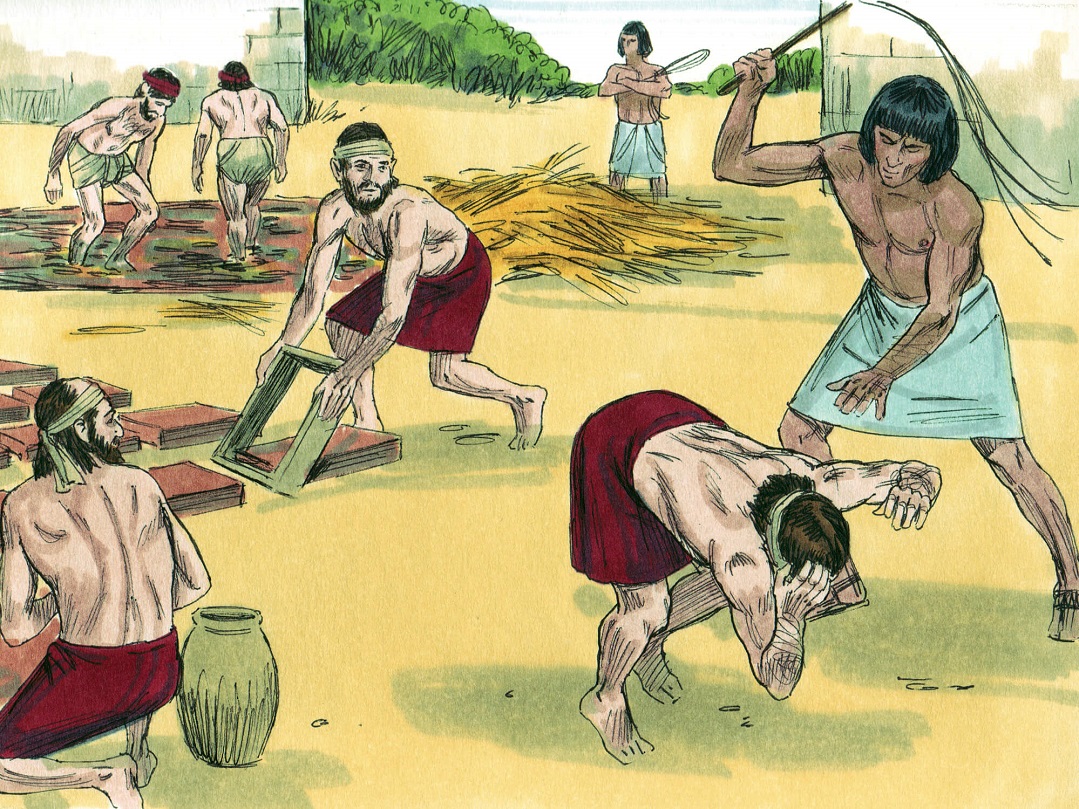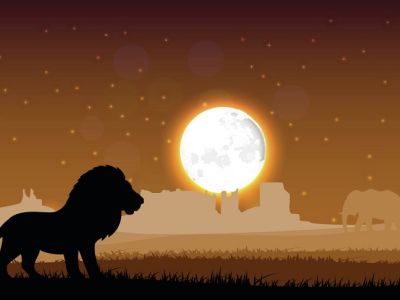The Purpose of Affliction
The Purpose of Affliction
But the more they afflicted them, the more they multiplied and grew.
That’s how verse 12 starts in the book of Shemot (Exodus). The people of Israel were blessed immensely in Egypt under Joseph’s reputation. But “now there arose a new king over Egypt, who did not know Joseph.” That’s where the affliction begins and where our study of this most terrifying word called begins.

When most people think of the word affliction they do not think of kings and queens, supernatural powers, or exaltation. They think of things more along the lines of death, sickness, the story of Job, dungeons, and maybe even Satan. But the truth of the matter is that both viewpoints are correct. Affliction encompasses all of the above and so much more. It just depends on your perspective. Yeshua was beaten and then even killed by the agents of the adversary, but was exalted King in the supernatural realm. His affliction was the stepping stone to His destiny. With this in mind, let’s take a look at the word affliction in these first few chapters of Exodus a bit more closely and see what we find.
As you read through chapter one you discover that the new king that arose in Egypt began to look at the Hebrews with contempt and as a threat due to their sheer numbers. So out of fear, he made them slaves in a land that once was their refuge and the Pharaoh their benefactor. His rage and fear grew to such an extent that he decided to issue an edict to kill every firstborn male that was born of a Hebrew woman.
In chapter two, Moses is born during this death command but his mother hides him in a basket at three months of age and he ends up being found by one of Pharaoh’s daughters and is raised in the palace. The irony is quite amazing. One of the very boys that was supposed to die now becomes a son of the Pharaoh that issued the decree! From there, Moses grows up, discovers who he is, kills the Egyptian taskmaster, flees the city, and ends up living a new life in the land of Midian. It is at this point – in chapter 3 – that he is introduced to the God of Israel at the burning bush and the rest of the story of the Exodus begins. Moses finds his real destiny after almost tasting death…after affliction. Let’s drill down a bit.
In verse 7 of Exodus chapter 3 we read, “And Yahweh said: ‘I have surely seen the affliction of My people who are in Egypt, and have heard their cry because of their taskmasters, for I know their sorrows.'”
One of the things I’ve always tried to teach is that God operates in patterns and perfect formulas. The universe is held together by physical laws that were created by a Master Scientist. But those physical laws only mirror the spiritual laws that exist in the spiritual realm. The student that desires to grow in his relationship with the Creator of heaven and earth would do well to pay less attention to the story itself and more attention to the patterns within the story. When we take the time to look for the pattern, we will find the formula for life. So let’s do just that.
The story of the Exodus actually starts in the Promised Land with Joseph as the favorite son of his father Jacob, patriarch of all the sons of Israel. Then tragedy happens and Joseph is lost for two decades, an event that practically tears the family apart from within. From that affliction comes a resurrected foreshadowing of Messiah in the form of Joseph, who saves the known world with his anointing and elevation to viceroy of all Egypt. God’s plan was perfected and all seemed like the ending of a Disney fairy tale. But at the end of the Hebrew people’s incredible growth and a period of amazing blessing, here comes affliction again in the form of the Hebrew people’s persecution. BAM! KAPOW! HOLY TORPEDO BATMAN! We have our pattern.
So…in the Chronicles of Narnia, why doesn’t the story end with King Peter ruling over the Narnians with Azlan at his side into “happily ever after”? What does Azlan say at the end of the Narnia movie about Prince Caspian? He says that two of the children will not be coming back because they’ve learned “all they could learn” from that adventure. This is exactly what the Lion of Judah is doing here in this real life Narnian story. Remember, the only reason Yahweh had to get the Israelites into Egypt to begin with was to save them from the drought and grow them to where He needed them to be. This was not the end of the story. It was only the beginning. They couldn’t stay in Egypt because that was not the land of Promise. It was only the land of the first training.
QUESTION: How often do we as humans and even believers tend to despise where we came from? Many of us grew up in churches that we later found out didn’t quite tell us the whole truth. That was our Egypt. Didn’t many of you get saved in the name of “Jesus” in those churches and former denominations? Didn’t the same God of Israel grow you during that time period until such time that He called you out into the Wilderness for the next stage of your journey? Shall we despise our humble beginnings? If God is the all-Sovereign Creator we say He is, didn’t He put you there Himself?
Egypt was not a bad place. For over four hundred years it was the greatest place the Hebrews could have ever dreamed of. They had the best lands and grew exponentially while they were there, until the Creator decided it was time for them to head back to their real home, to the land of Promise. So here in this story, we see the pattern, the formula:
a promise is given –> time goes by –> affliction happens >Divine
intervention using a single person –> deliverance –> fulfillment of Promise.
The pattern is the same in almost every story. Think about it. Abraham was given a Promise, there was a waiting period, then affliction in his heart when he was told to sacrifice Isaac, deliverance by a ram, and finally the promise kept. We see the pattern in Joseph, as well. Promise through dreams, waiting period, affliction, redemption by the king of Egypt, then Joseph himself becomes the redeemer, promise fulfilled. Whether it is Moses, Esther, Daniel, Paul in prison, or even Yeshua, the pattern is always the same. And it seems like the key component in the formula, the fulcrum point on which everything on the teeter totter shifts is this word affliction.
In Hebrew, the word is “on-ee”, spelled ayin, nun, yod. According to Strong’s Hebrew dictionary, it means “the state of pain and/or punishment resulting from affliction.” In the ancient Paleo pictograph Hebrew, where every letter was a picture with its own meaning, oniy meant “to look upon life in the hand.” This is extremely powerful if we understand ancient Jewish thought about what the hand actually is. In Hebrew, the letter yod means “hand” and is oftentimes connected to the right hand power of God as it is the first letter in His name, Yahweh (Yod, Hey, Vav, Hey). In ancient Judaism, the letter yod is thought of as pure blackness with no light as it is just a black dot that looks like our apostrophe. With this in mind, let’s take a look at the Paleo definition again. If the hand of God is all you can see, and it is only blackness, then the hand of God is against you. In other words, if all you see is the hand and not the face behind it, then He’s blocking the Light on purpose, which is what causes the affliction in the first place. As we shall soon see, He does this for a greater purpose.
Lamentations 3:2-3 says, “He has led me and made me walk in darkness and not in light. Surely He has turned His hand against me…”
When the hand of Yahweh is against us it blocks the Light of His countenance and places us in darkness. This state of darkness and pain is called “oniy,” affliction. What is most important is for us to discover is His purpose in telling us to “talk to the hand,” to borrow a popular expression.
Here’s His purpose. Remember that we learned from previous articles that God is always benevolent and is always trying to give to His creation. His desire is to bring us back to the “Promised Land” of the Garden where He once had intimate relationship with us. Everything that happens to us is to that end. And that journey is filled with mountains and valleys. The pattern is simple. Cross the valley, go through dark woods, climb the mountain, trip over the top of the mountain, fall all the way down, cross a new valley, etc…until you reach the next mountain and the pattern keeps repeating over and over again. The purpose is to progress the soul to greater heights until it once again matches the “image” of the Creator. And no one seems to pay attention to much in the pattern until the “affliction.”
What happened to the Israelites when they were not facing any affliction? For four hundred years they were busy building their own cities in Egypt and pretty much got fat, happy, and way too comfortable. They had forgotten all about the Promise of God’s kingdom that was to be built in their own land. Using that fact, we can now see from where the affliction most often. It’s a tool He uses when we’re off course and He needs to get us back, or it’s a tool He uses when we’re actually on course but need to grow stronger for the higher mountain ahead. In either case, affliction does something. It causes His people to stop whatever they’re doing and cry out to their God. This is the point of the Paleo Hebrew meaning, that they saw the life in His hand that was against them. In other words, in the blackness of His hand being against them (for the purpose of elevating them to a new “mountain”) they stopped seeing with their physical eyes (ayin) and began looking through their spiritual ones. They saw that the very hand that was against them was the hand that could actually save them. And so the purpose of affliction was fulfilled. It caused His people to stop and call out to Him, which brought them near to Him, which, in turn, would move them from one place (mountain) to the next (mountain). Without affliction, people don’t seem to ever actually follow the will of God.
In other words, the purpose of affliction and moments of darkness is to produce the full name of God in our lives. Allow me to use Yahweh’s name as an illustration of the purpose of the spiritual journey of affliction. Yahweh’s name starts with Yod, His hand. It is at this point that one is still in darkness. But when a man comes to full realization of his position and cries out to Yahweh in humble supplication, this “revelation” is, in fact, invoking the second letter of His name, the letter Hey, which means “revelation” in Paleo Hebrew. Once he stops fighting Yahweh’s hand and submits to what the Creator is doing in his life, this revelation fuses the Yod and the Hey together which spells the word “Yah,” the short name of Yahweh. When this act of repentance happens, it removes the hand and reveals the Light of “Yah,” the face of God.
The Divine Light
It is this Light that now shines on us and creates the divine assistance we need to take the next step to fully embed His name in our lives. This is the point where the Israelites cried out to Yahweh and humbled themselves before Him in their darkness. And it was at this moment that He heard their cry and the Light of His countenance shone on their situation through His mighty hand and outstretched arm. But at this point, Yahweh was only giving them divine assistance. They had yet to do anything more than admit they were helpless and cry out to their King. It’s the next step that is the most critical.
At this point, the name of Yah has been invoked but His name is not fully complete until the final Vav and Hey are also added. In continuing our spiritual journey, we now see that the affliction has produced in us new Light. Now we must finish the work to bring about the full name and authority in our lives. To do this we need to initiate the letter Vav. Vav is a “hook” or a “nail.” It connects two objects together. The Vav is also the letter that is connected to Yeshua our Messiah, who took the nail for our sins, therefore connecting us to His Father through His blood. And the only way to get to the final Hey, the final “revelation,” is for us to also crucify our flesh by placing the nail through our own hand (yod) and follow His instructions. When we choose to obey Him and rise above reason, refusing to walk by sight and leaning on our own understanding, His Light gives us the divine assistance we need to accomplish such obedience which brings about the Promise, the final revelation (Hey).
So now we begin to see the entire purpose of affliction from the mind of Yahweh: to get us from one mountain to the next in our spiritual journey. No one would voluntarily go into the dark woods or dangerous valley. Affliction becomes the means to not only move us forward, but also higher in our walk with Him. Remember, He is not as concerned as we are about our comfort and security; He’s playing for eternity. In other words, He understands that our lives are but a breath and then eternity comes and there’s no more time for us to reach our full potential. So He does whatever He has to do to get us to the highest rung possible so we may qualify for every spiritual blessing available when we reach eternity. Where we think from an earthly perspective, He thinks of our eternal blessings.
Hosea 5:15 tells us the reason Yahweh allows affliction: “I will return again to My place, till they acknowledge their offense. Then they will seek My face. In their affliction they will earnestly seek Me.”
Affliction causes us to wonder why the lights went out. That, in turn, causes us to humble ourselves before Him, cry out to Him, and seek His face. This causes Him to remove His hand and “show us the Light,” bringing us the assistance we need to bring the correction that He is looking for, which will always be some sort of crucifixion of our flesh. When the correction is fully made, it brings about a more mature servant who has now reached more potential than he ever did before the affliction started.
Take a look at what happened to the Hebrews once they put aside their “Egyptian” way of thinking, their traditions, and their all-about-me lifestyle and began to look again at the original promise. Their enemies were destroyed and they were elevated to heights beyond imagination as they were introduced to the God of Moses that would lead them into their true destiny.
Ladies and Gentlemen, we’ve been looking at this all wrong. We run from affliction, blame everyone else for our troubles, and judge those who’re in the valley when we’re on the mountaintop. Instead of concentrating on our own race, we try to run everyone else’s race for them. We forget that affliction, in all its forms, is crafted by the Creator to bring us to new heights if we submit to His mighty right hand and seek Him with all our hearts. Affliction brings about the fullness of the name of Yahweh in our lives, therefore bringing about the real image of God. The unleavened bread of Passover is called the “bread of affliction” (Deut. 16:3) for a reason. It is designed to remind us that our freedom began through affliction. For this very reason Yeshua said that we must eat of His body (bread) and drink of His cup (affliction that brings forth blood) in order to be elevated from this world to the next.
May we not run or blame others for the hand of affliction in our lives, but rather humbly embrace His methods, how ever they may arrive. May affliction be what liberates us, elevates us, and brings us to our final destination.
Shalom,
Jim Staley












